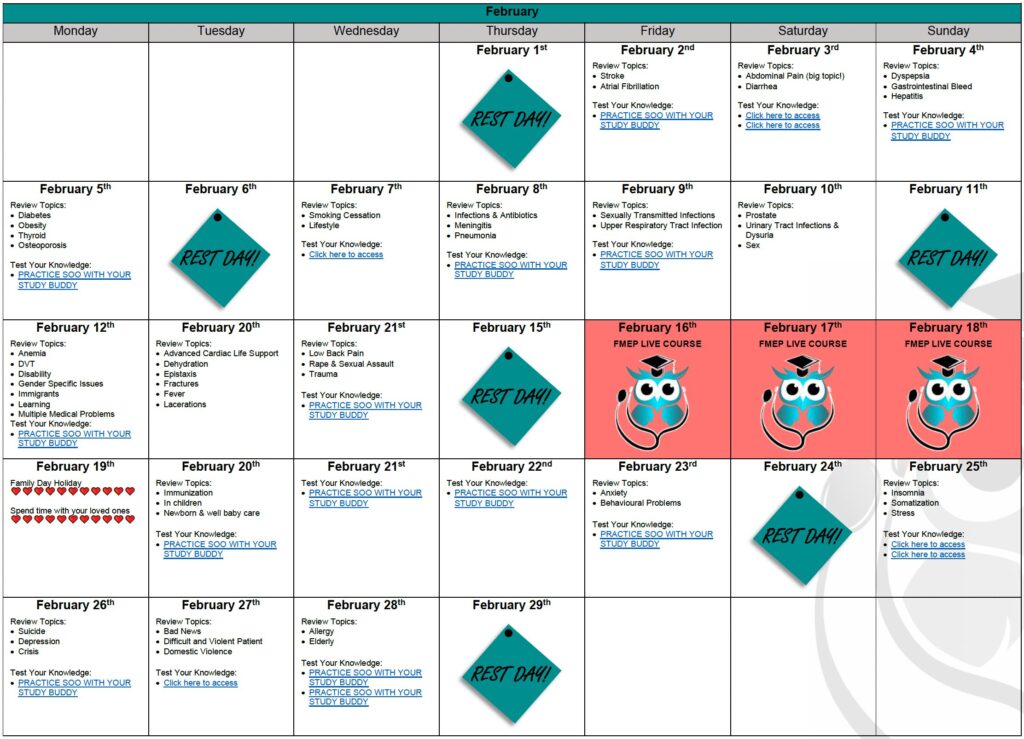
YOUR DETAILED CCFP EXAM STUDY CALENDAR: BE PREPARED!
The CCFP exam is quickly approaching. We know you are juggling many personal and professional...
Comments Off on YOUR DETAILED CCFP EXAM STUDY CALENDAR: BE PREPARED!
Just a reminder… pay attention to the questions. Here are our general tips one more time:
1. Pay attention to the questions. Look carefully at how many items you are being asked to list. If the question asks for five items, you will not get more marks if you list eight items; the examiner will look at the first five and allocate marks only for the first five answers – so be careful. On a SAMP, if it is not clearly stated how many items you should list, look at the amount of points/marks being allocated for the question to get an idea of how many answers the examiner may be anticipating you write down.
2. Do not write lengthy answers. Most questions can be answered in 10 words or less!
3. Be specific when writing down investigations (hemoglobin instead of CBC; CT abdomen instead of CT).
4. Remember that trade names and generic names are both acceptable when writing down medications.
5. For more helpful tips, you can refer to CCFP’s SAMP instructions by clicking here.
SAMP
Mrs. Low Mood, 38 year old female comes to see you for low mood. She has been feeling down for the past 6 months. She recently lost her job and has been stressed due to her financial situation. She was hoping to get pregnant but this has been on hold in light of her recent job loss. She cries on most days of the week and spends most of her time on the couch at home. She is otherwise healthy. She does cocaine 1-2 times a month and smokes 2 cigarettes a day. She is currently on no medications.
She had a complete blood count, vitamin B12, thyroid-stimulating hormone, and ferritin level done recently at a walk-in clinic. They were within normal limits. (8 points)
1. What tool can you use to assess depressive symptoms in adults? (1 point)
2. What are three first-line classes of medications you can use to treat depression? (3 points)
3. You start Mrs. Low Mood on an antidepressant. You see her in follow-up in 8 weeks and her mood has improved slightly but she is still feeling down. What change can you offer to her for her pharmacotherapy? (1 point)
4. What are non-pharmacologic management options you would like to discuss with Mrs. Low Mood? (2 points)
5. True or false: antidepressant use during pregnancy has a strong association with congenital malformations and should not be used. (1 point)